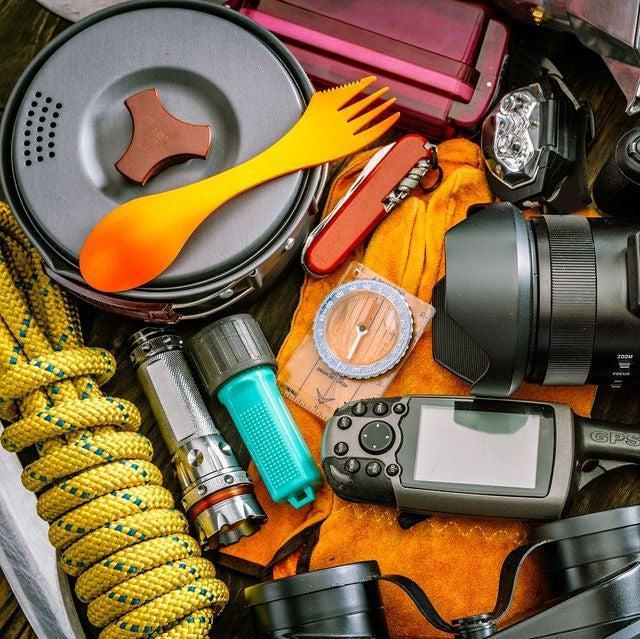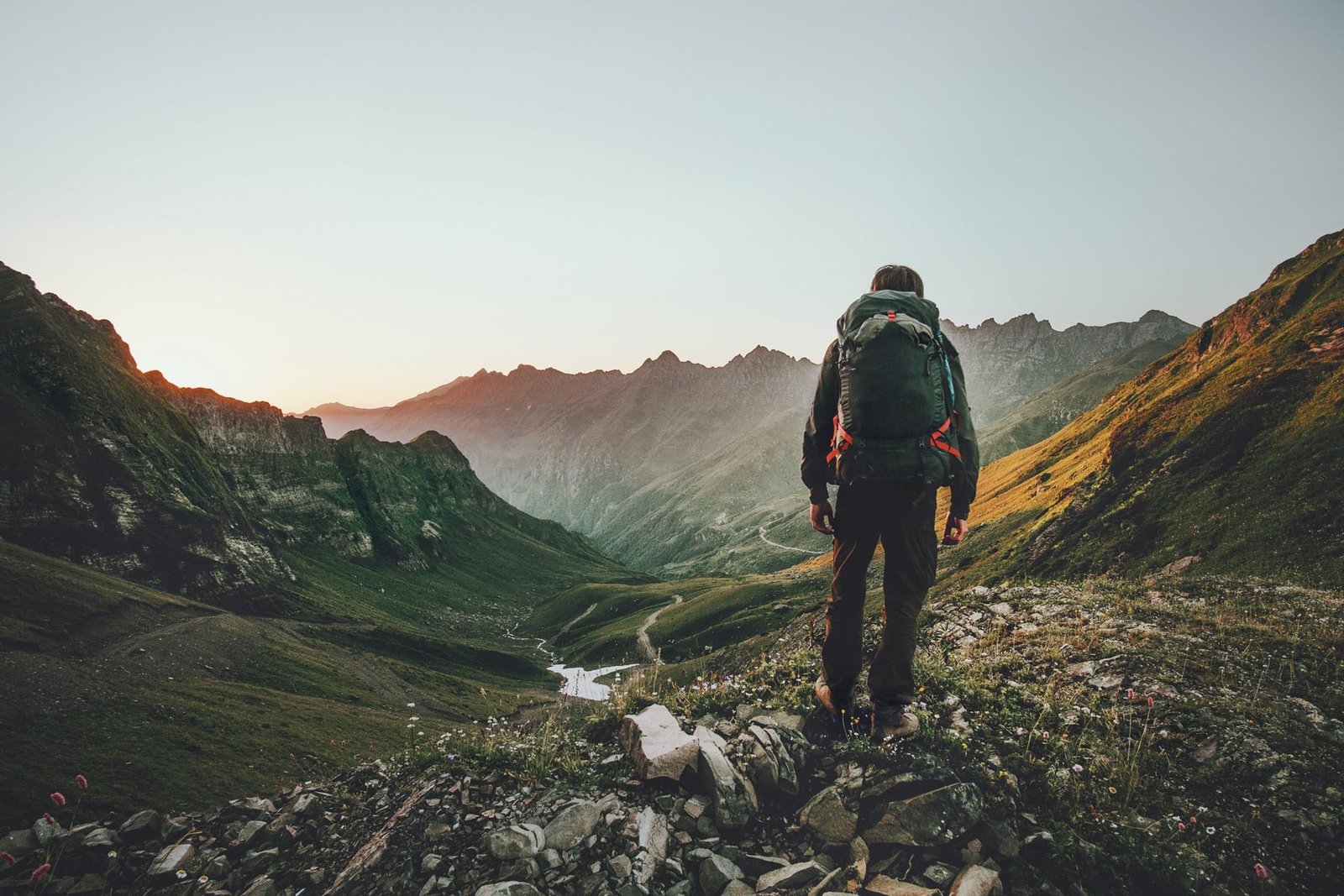
Mastering the Art of Off-Grid Cooking: Survival Meals Made Simple
Share
Off-Grid Cooking: Your Survival Lifeline
Picture this: a storm rages outside, power lines snap, and silence envelops your home. Your electric stove? Just a useless hunk of metal now, as your stomach growls and the pantry begins to feel like a prison. Off-grid cooking isn’t a hobby; it’s your lifeline. Without the skills to whip up a hearty meal when the grid goes down, you might find yourself at the mercy of canned goods and dwindling rations. If you don’t take action NOW, hunger will be your only companion in the dark.
In a world where 3 billion people already live without electricity, the ability to cook off-grid isn’t just practical—it’s a necessity. Equip yourself with the knowledge and tools to sustain not only your body but your spirit as well. When others are left hungry and helpless, you’ll have the independence and confidence to nourish your loved ones and thrive in the face of adversity. Do you really want to risk being among the unprepared when everything goes dark?
Proven Off-Grid Cooking Techniques to Master
When the grid falls silent, it’s time to listen to nature’s call. Cooking off-grid means embracing the elements, not fighting against them. Here are techniques forged from hard-earned experience, whether I was holed up in a snowstorm or cooking over a campfire:
Firewood Cooking: The original survival kitchen. Master the fire pit—use sturdy stones, cast iron for even heat, and manage your flames. One-pot stews and pan-fried bannock become your best friends as you gather around the warm glow of flames. Your survival depends on it. I’ve relied on this method deep in the Appalachian backwoods when ice storms knocked out power for days and roads were impassable.
Rocket Stoves: For those moments when you need quick heat with minimal fuel. These compact stoves burn twigs like jet fuel and can be crafted from scavenged materials. I’ve boiled water in mere minutes, relying only on dry bark and pine needles. Don’t underestimate their power. In the drought-prone Southwest, where open flames can be dangerous, rocket stoves offer a safer alternative for cooking during wildfire season.
Solar Cookers: Slow-cooked meals in the sun? Absolutely. While it may take longer, the efficiency of solar cooking is unmatched. Cook rice and beans without a whiff of smoke, perfect for stealthy survival situations or sunny days out in the wild. If you’re not utilizing every resource, you’re leaving yourself vulnerable. Solar cookers shine in the high deserts of Nevada and Arizona, where cloudless skies and intense sun are the norm even in winter.
Propane Grills: Ideal during short-term outages or when bugging in. Just remember to stash extra canisters safely. I’ve turned to mine during storms when the entire neighborhood went dark. Don’t wait until it’s too late; stock up now. In hurricane-prone areas like the Gulf Coast, propane grills are a staple during the long recovery periods after a storm surge wipes out the local grid.
Fireless Cookers: Ingenious insulated boxes that keep cooking without any flames. A critical tool when every ounce of fuel counts, and you’re on the move. You need to think ahead—fuel may not always be available. I’ve used one while traveling through the Cascades, where wet conditions made fire-starting risky and time-consuming.
Essential Gear for Off-Grid Cooking: Don’t Leave Home Without It
No need for a fancy kitchen when survival is on the line. What you need is smart gear that’s rugged and ready for the elements. My off-grid cooking kit has survived brutal storms and relentless winds—every piece is field-tested and indispensable:
- Cast iron skillet and Dutch oven—reliable, versatile, and nearly indestructible.
- Portable rocket stove or foldable wood-burning stove.
- Compact solar oven—panel-style for easy transport.
- Multi-fuel camp stove—capable of running on propane, white gas, or wood.
- Ferro rod and waterproof fire starters.
- Sturdy knife, metal spatula, and hand-crank can opener.
- Spice pouch: salt, pepper, garlic powder, chili flakes, bouillon cubes.
All these essentials fit into a single duffel bag. When the grid falters, this kit ensures you stay fed, warm, and focused. Equip yourself with gear designed to withstand the worst conditions—not just what works on a sunny weekend in the backyard. Your survival depends on having the right tools at your fingertips. Whether you’re riding out a Nor’easter in rural Maine or bracing against a blizzard in the Alaskan interior, this kit delivers.
Field-Tested Recipes for Off-Grid Cooking
Every meal you prepare off-grid is an opportunity to boost morale and energize your spirit. Here’s a selection of recipes that are not only simple but also designed to endure the rigors of the wild:
1. One-Pot Lentil Stew
- 1 cup lentils
- 1 chopped onion
- 2 cloves garlic
- 1 chopped carrot
- 2 tsp salt, 1 tsp cumin
- 4 cups water
Simmer over a steady flame for 30–40 minutes. For added protein and nutrients, toss in jerky strips or dehydrated greens. This stew has kept me warm through the harshest Rockies nights—hearty, filling, and crafted from shelf-stable ingredients. It’s more than food; it’s survival.
2. DIY Bannock Bread
- 2 cups flour (regular or acorn flour)
- 1 tbsp baking powder
- 1 tsp salt
- Water—just enough to form a dough
Mix, flatten, and cook in a skillet or on a hot rock near coals. If you have them, add dried berries or herbs. This simple bread has salvaged many backcountry breakfasts. Don’t just eat to survive—consume to thrive. Up in the Sierra Nevadas, I’ve foraged manzanita berries to mix in for a tart, wild flavor.
3. Off-Grid Energy Snacks
On the move, you need quick fuel. Here’s what I pack:
- Oat and peanut butter balls (just oats, PB, and honey)
- Jerky and dried fruit trail mix
- Roasted chickpeas over the fire with salt and paprika
No refrigeration, no fuss—just dense calories meant to carry you through long hikes or bug-out scenarios. Prepare for the worst, and snack like your survival depends on it—because it does. These have kept me going on multi-day treks through Oregon’s Cascade Range, where food stops are miles apart and weather can turn fast.
Meal Planning for Survival: A Tactical Approach
Meal planning off-grid is not an option; it’s survival 101. I once found myself two weeks into a solo trip with no salt or protein—never again. Here’s how to plan like your life depends on it—because someday, it just might:
Start with calorie-dense staples: rice, beans, oats, jerky, nuts. Build your meals around ingredients that store well and cook easily over primitive heat. Dehydrate your own vegetables and fruits to maximize shelf life and save space. Rotate your stock monthly—eat what you store, replace what you eat. Sealable containers keep pests and moisture at bay, minimizing waste in the wild. Failing to prepare is preparing to fail. Don’t let that happen to you.
Good food isn’t just about sustenance; it’s about morale. In a crisis, mood is fuel—and a hearty meal is one of the best ways to restore it. Don’t just survive—fight for your mental edge.
Preserving Food Without Refrigeration: Ancient Techniques for Modern Needs
In the wilderness, refrigeration is a luxury we can’t afford. Arm yourself with old-school preservation techniques that work anywhere, anytime:
- Dehydration: Ideal for fruits, vegetables, and meats.
- Salt curing: A time-tested method for preserving fish and game.
- Fermentation: Sauerkraut, kimchi, and pickled eggs that keep well and boost gut health.
- Root cellaring: Store root crops and apples underground where temperatures remain stable.
These methods are not just contingency plans; they are the same strategies our ancestors employed to survive unforgiving winters and lean seasons. Learn them, practice them, and implement them. Your food security depends on it. Don’t let your ignorance lead you to desperation. Whether you’re smoking salmon along the Kenai River or root cellaring potatoes in the Ozarks, these techniques keep your pantry alive when refrigeration fails.
Elevating Off-Grid Cooking: Gourmet Meals Are Within Reach

Off-grid cooking doesn’t have to mean settling for bland rations. With the right techniques and a few well-chosen spices, you can create meals that rival anything from a modern kitchen. I’ve savored slow-cooked venison stew over open coals, baked cornbread in a Dutch oven, and even whipped up wild berry cobbler using foraged fruit in my trusty cast iron skillet.
Flavor comes down to knowing your ingredients, seasoning wisely, and mastering the fire. A pinch of cumin, a dash of paprika, and a sprinkle of dried thyme can transform a simple dish into something extraordinary. Don’t just aim to survive—strive for satisfaction. You deserve nothing less.
Are you ready to elevate your off-grid skills? Start building your plan, testing your gear, and cooking like your life depends on it—because one day, it just might. Don’t wait—act NOW.


